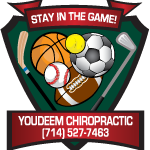Posts Tagged ‘Exercise’
Good Reasons
Good Reasons. Exercise reduces blood viscosity, enhances your muscles’ abilities to extract oxygen from your blood, and increases your productivity. Surgeon General’s Report on Physical Activity and Health, 1996
Read MoreWalk Much?
Walk Much? The more moderate physical activity (like brisk walking) you do, the better. Compared to doing nothing at all, seventy five minutes of vigorous walking per week was linked to living an extra 1.8 years. Walking briskly for 450 minutes or more per week was found to provide most people with a 4.5-year longer…
Read MoreWant A Healthy Brain?
Want A Healthy Brain? Physical exercise is important when it comes to maintaining a healthy brain. Scientists found that Growth Hormone (stimulated by exercise) increases the amount of stem cells that actively generate new nerve cells in the brain. Growth Hormone also slows and can even reverse the decline in new nerve cell formation normally…
Read MoreBenefits For Breast Cancer Survivors
Benefits For Breast Cancer Survivors. For breast cancer survivors, the benefits of exercise outweigh the risks, including those who develop lymphedema, a chronic swelling that commonly occurs after breast cancer treatment. Balance the pros and cons of the activity one chooses, but keep in mind that even remaining sedentary has risks and being active is…
Read MoreGood Reasons
Good Reasons. Exercise helps you to maintain your resting metabolic rate and reduces the risk of developing colon cancer. Exercise also increases your tissues’ responsiveness to the actions of insulin (i.e., improves tissue sensitivity for insulin), helping to better control blood sugar, particularly if you are a Type II diabetic. Surgeon General’s Report on Physical…
Read MoreGood Reasons
Good Reasons. Exercise improves respiratory muscle strength, improves muscle endurance, reduces your risk of having a stroke, and helps you burn excess calories. Surgeon General’s Report on Physical Activity and Health, 1996
Read MoreNot Enough!
Not Enough! On average, Americans spend only about 2 hours each week participating in sports and fitness activities. The CDC recommends adults aged 18-64 get about four hours of physical activity each week by exercising moderately (ex: brisk walk) for 2.5 hours per week and engaging in a vigorous activity, such as running and muscle…
Read MorePain Relief?
Pain Relief? Exercise helps to alleviate pain related to nerve damage (neuropathic pain) by reducing levels of certain inflammation-promoting factors called cytokines. This supports exercise as a potentially useful non-drug treatment for neuropathic pain. In experiments, exercise reduced abnormal pain responses by 30-50%. Anesthesia & Analgesia, June 2012
Read MoreEffects Of Motion
Effects Of Motion. Patients with DJD (degenerative joint disease, osteoarthritis and rheumatoid arthritis) participating in conditioning exercises showed significant improvement in endurance, grip strength, and flexibility. Arthritis & Rheumatism, 1984
Read MoreLack of Motion
Lack of Motion. Back in 1933, a study showed lack of proper joint motion can cause Degenerative Joint Disease (osteoarthritis). An immobilized joint will develop cartilage changes similar to those of osteoarthritis. Surgery, Gynecology & Obstetrics, 1933
Read More
